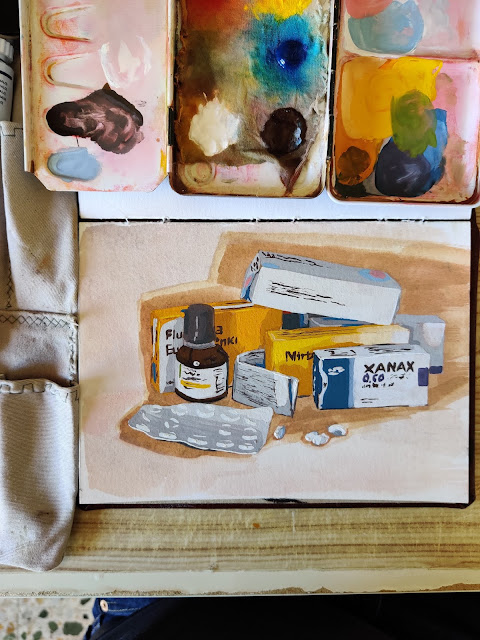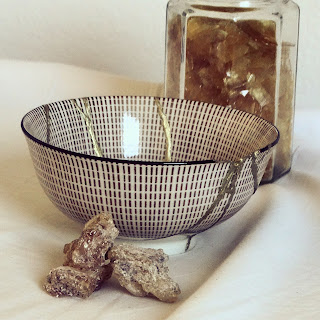Different approaches to drawing and painting architectural subjects in landscapes
This article has been published on Outdoorpainter.com! Click here to read it there.
Different approaches to drawing and painting architectural subjects in landscapes
While architectural subjects are not my favorite, sometimes I can't resist doing one, for example if a building has interesting architecture or the light is hitting it in a particular way, though what attracts me in the subject changes how I approach it. If I'm more interested in the shapes, perspective, and details I will most likely make it into a pencil drawing, but if it's more about the light, interesting color play, or if there's some other element to combine with the architectural one I might decide to paint the scene.
Pencil
Personally I find it easier to make something detailed with pencil, so when I am purely attracted to the shapes and intricate details in a subject, I want to focus on capturing all that as best I can without having to worry about color, and a fine pencil point is of course easier to control than a soft brush tip. In the beginning the process is fairly similar for a painting or a drawing, as I always start out drawing a rough sketch to get the composition I want, making sure I get the perspective right, and then the big shapes. From there I start with the element of the composition that first caught my eye, though if there's elements overlapping that one I will draw those in roughly first. As I add more and smaller features and more detail I continually check perspective as usually even an untrained eye will notice if something is wonky. When I say detail though, I use the term somewhat relatively, meaning I add as much detail as I feel like adding, which usually is more of a suggestion of detail, especially when it comes to repeating patterns like windows. Once I'm satisfied with the main subject I will work outwards from it adding some but not too much detail to the surrounding elements. Often in my drawings levels of detail decrease as I move farther away from the subject on the page, but also if spatially an element is farther in front of or behind the main subject I leave out a lot of detail. All this helps to keep the focus where you want it.
Painting
As mentioned before I start out similarly if I want to make a painting, that is, by making a rough pencil sketch to get the composition, perspective, and big shapes down. There's no point in adding a lot of detail as very early on in the painting process the sketch won't even be visible anymore. I prefer to start by doing a general wash over the page to get rid of the white of the paper but still letting the sketch show through, after which I go more opaque and paint the larger shapes. Though I am often tempted to start out with a sort of paint-by-numbers approach, to paint every detail right away, I've found that it's unnecessarily time-consuming and doesn't get the best results anyway. For example in a subject made up of smaller shapes nested in bigger ones, it's much easier to paint the big ones in one go and the smaller shapes over it than to try to do everything at the same time. I'm sometimes afraid of doing this because I think I will lose track of the underlying sketch and will get the perspective or shapes wrong, which would be much harder to fix with paint than with pencil. However, I am much more annoyed at myself when I'm wasting a bunch of time trying to paint around smaller elements and having white spaces left between them because of this.
As I'm also thinking of color and light more during a painting than a drawing, I put less effort into details or perfect straight lines, and allow myself to be a bit more expressive in suggesting the details, though always making sure the overall perspective is correct. This gives me more time to focus on the color and light conditions that I wanted to capture to begin with and also allows the viewer to focus more on that than on all the finicky details. Relatively speaking again, as in a drawing, also in a painting I make the main subject more detailed than surrounding or farther away elements.
Piazza dei Miracoli with the Leaning tower just before first lockdown, Pisa, 2020
I get just as much joy and satisfaction out of painting or drawing an architectural subject, it just depends on the mood and the subject which one I'll use. If the color and light conditions are nothing particularly special, I find it more satisfying to make a pencil drawing capturing the details. Otherwise, I find a painting much more challenging but often worth it and all the more satisfying if I managed to get the right balance of suggested detail and color and lighting. Lastly it may also depend simply on time and opportunity, as a drawing is much quicker and a pencil and sketchbook much easier to carry everywhere than all my plein-air painting gear.
All works pictured are available for sale from www.rozendaalarts.com




Comments
Post a Comment